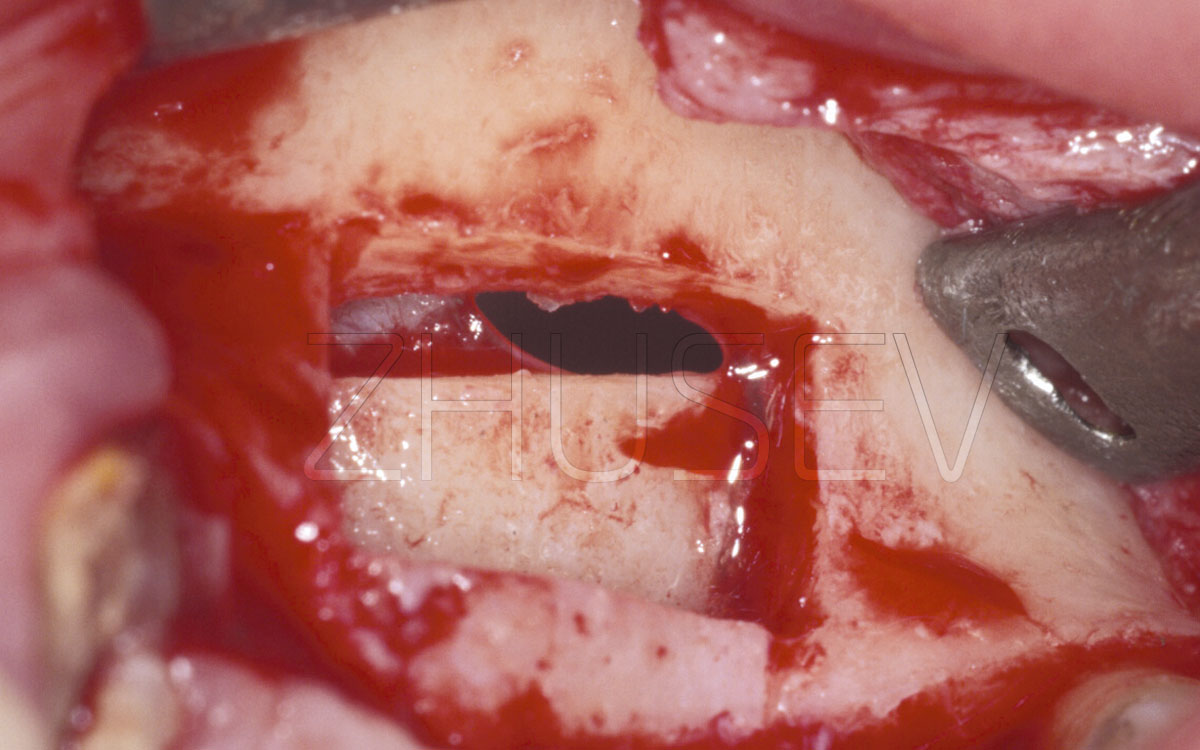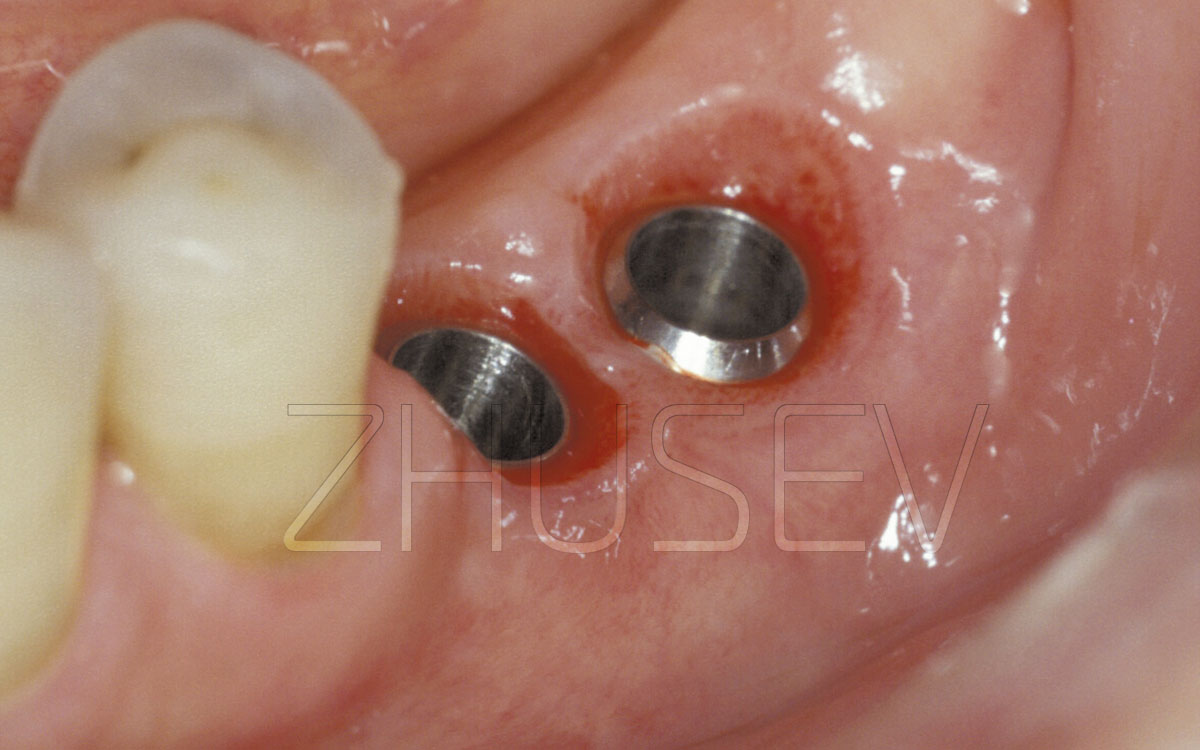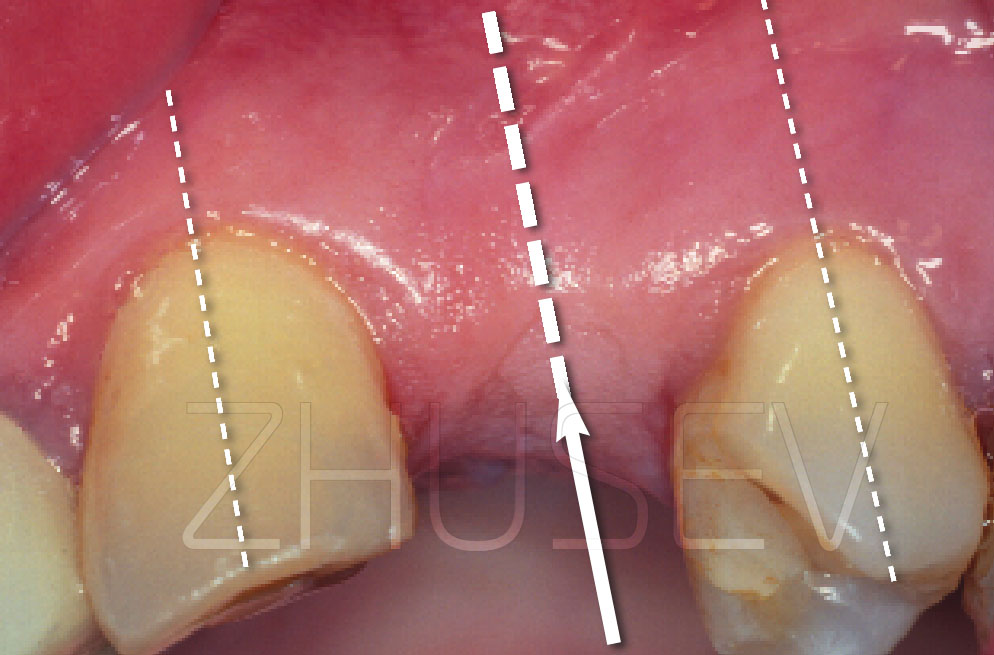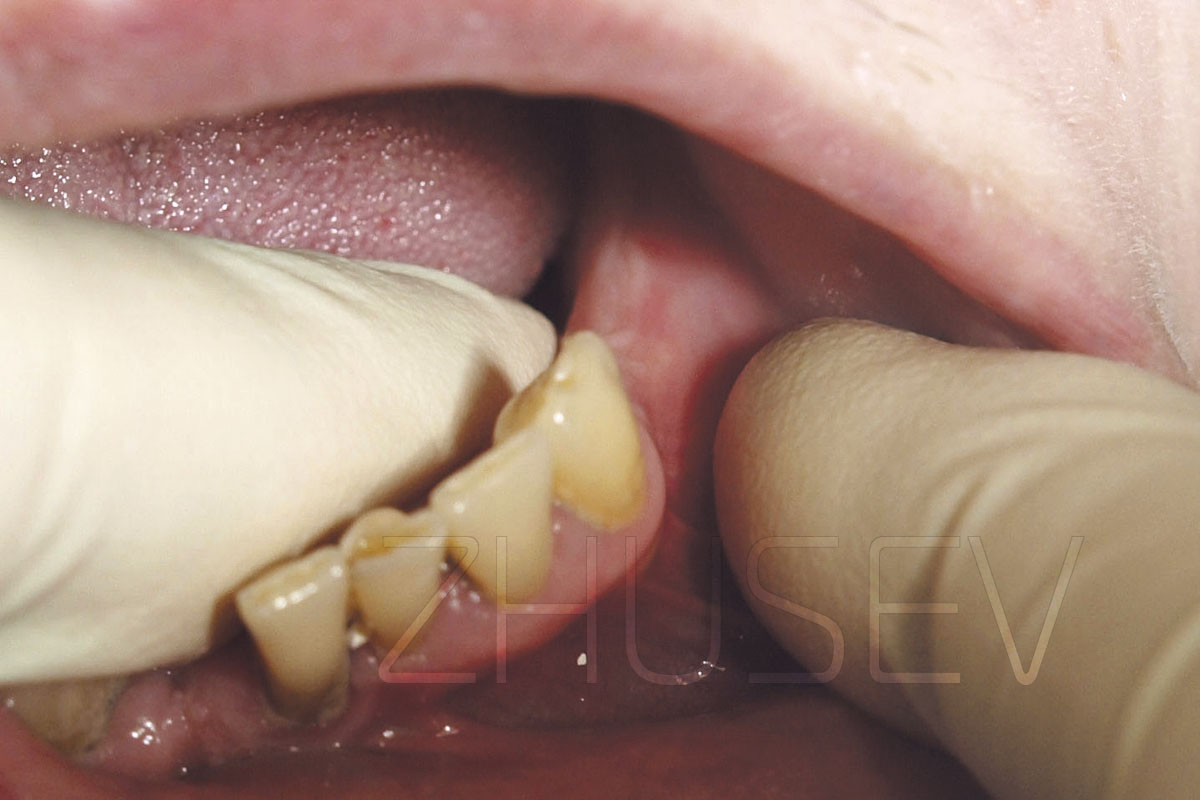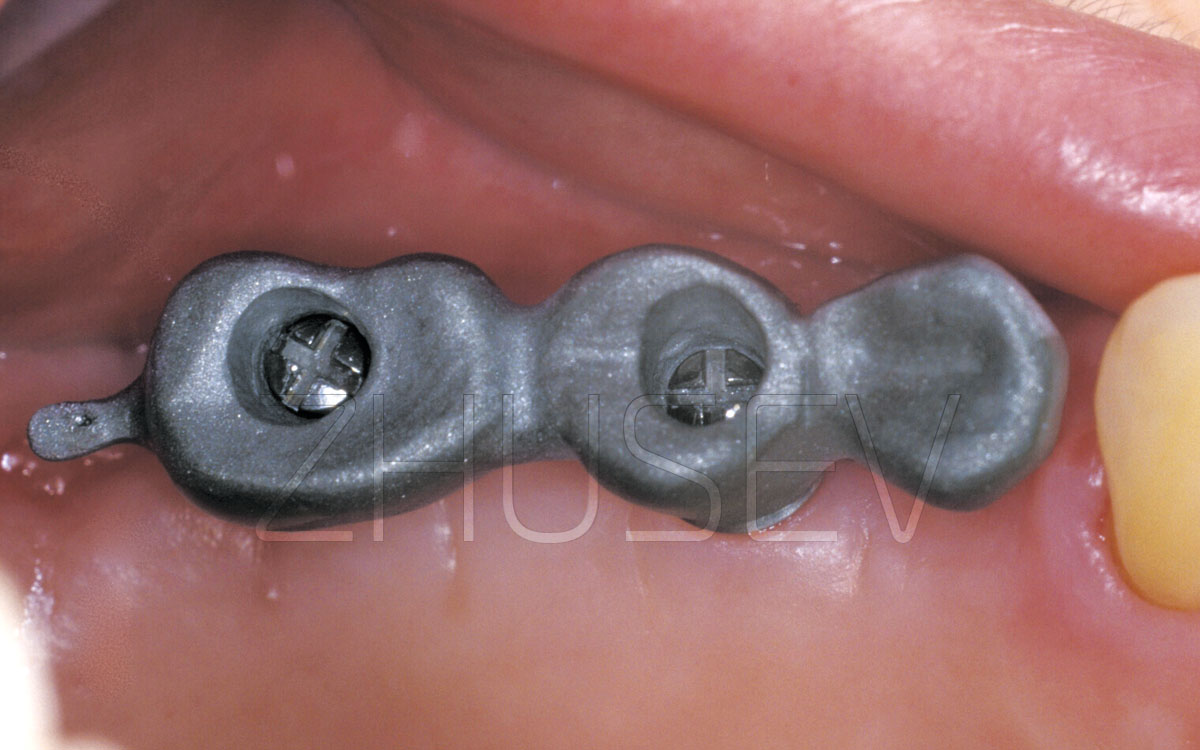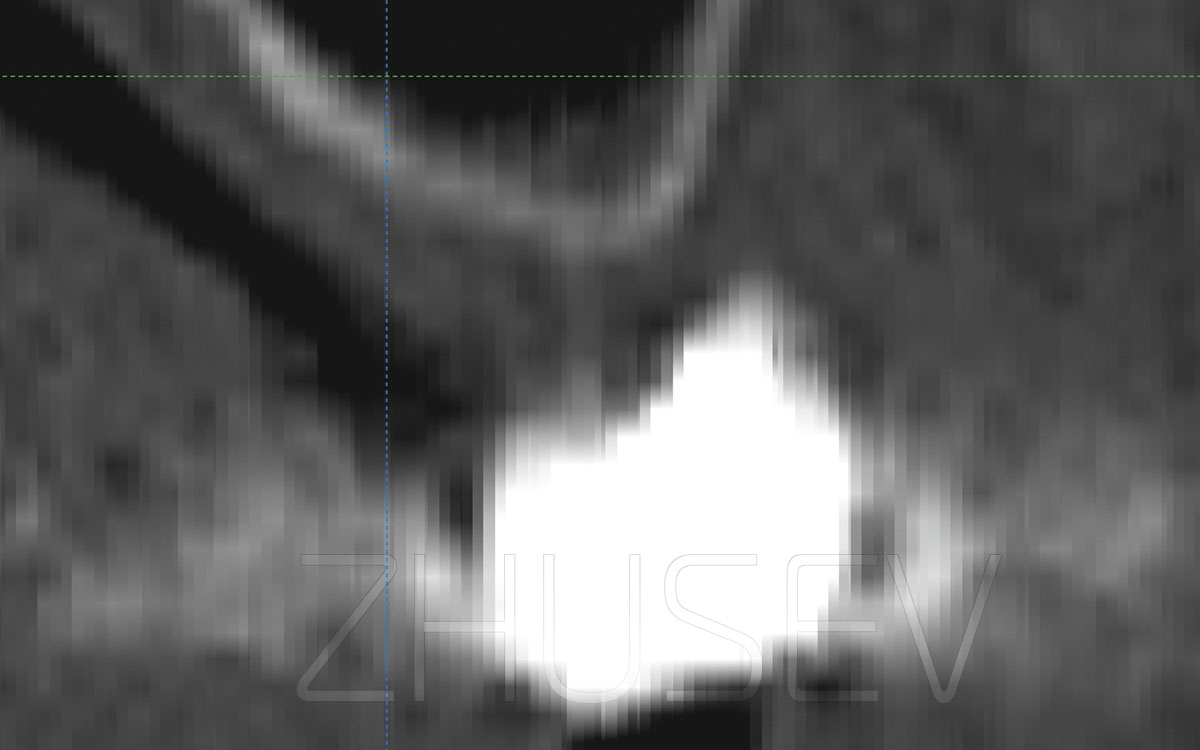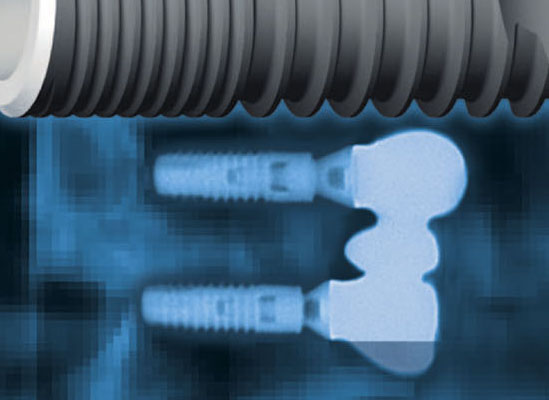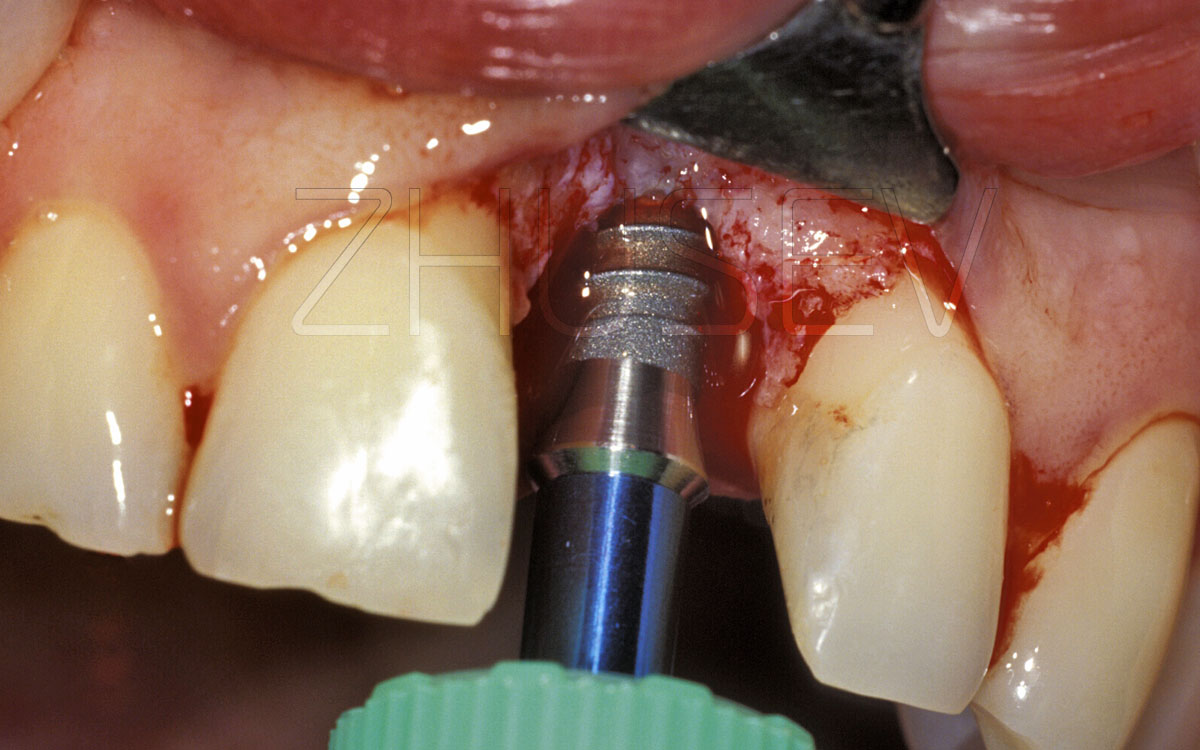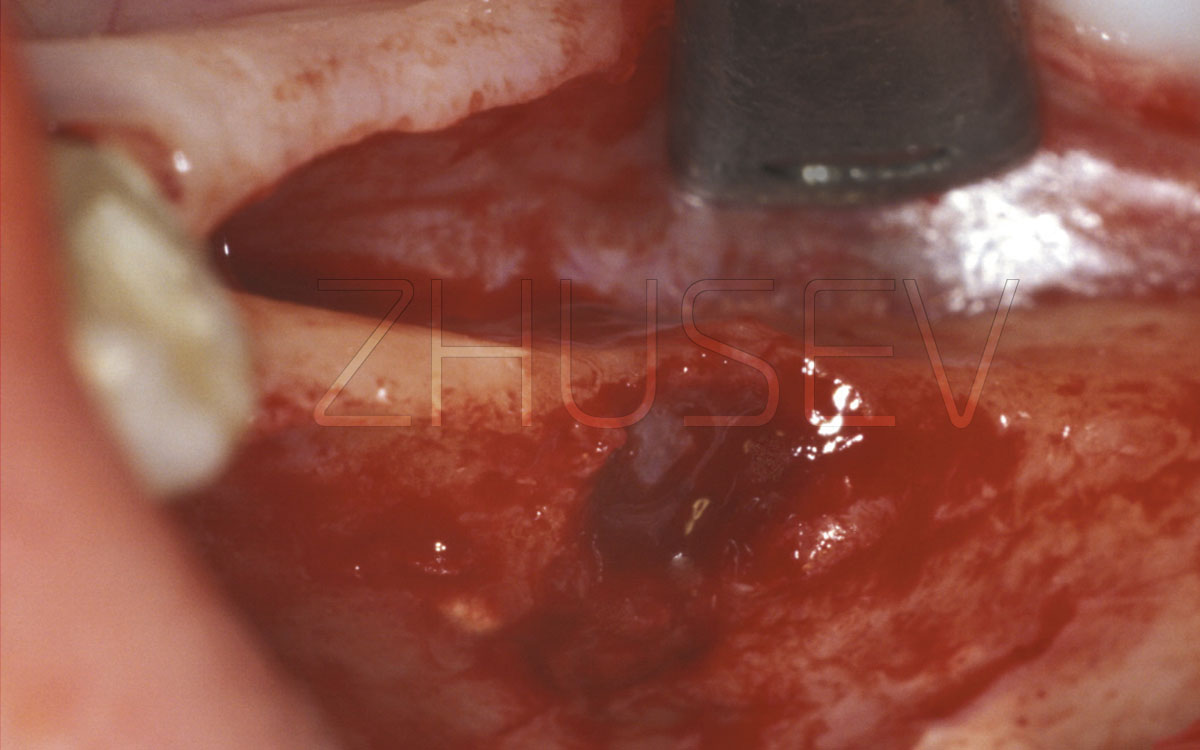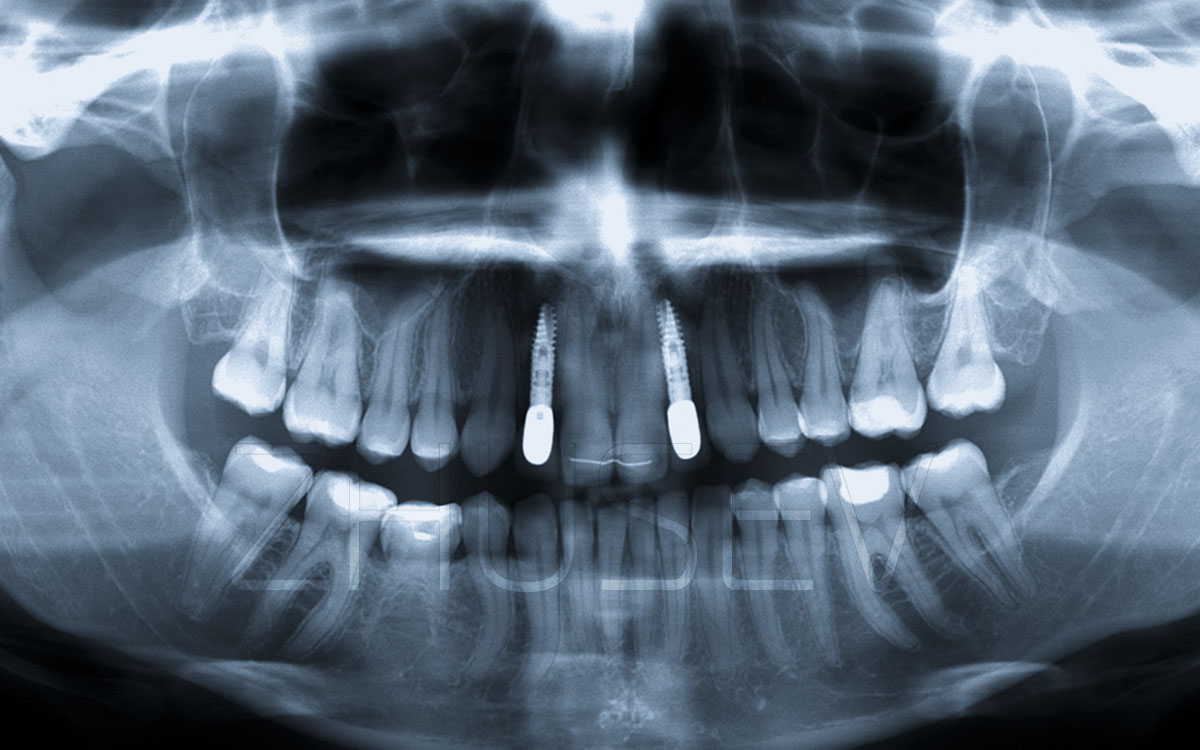In surgery, an implant is a transplant manufactured from man-made materials (ceramics, metals, etc.) and fused into living tissues to perform an intended long-term function.
The material of an implant must be biocompatible. Biocompatibility is related to the ability of an implanted material to perform with an appropriate host response without causing deleterious changes.
Depending on their biocompatibility, dental implants are classified into:
■ Biotolerant implants. These implants are made of materials which demonstrate resilience to biological impact (stainless steel, chrome-nickel and cobalt-nickel alloys), but induce a layer of soft tissue formation between bones and implant surfaces. These materials are subject to corrosion and partial diffusion. The phenomenon is labelled metallosis. Implants made of biotolerant materials are generally characterized by limited durability leading to the necessity of replacing them after a certain period of time. Hence biotolerant materials are extremely rare in implant dentistry.
■ Bioinert implants. They are made of materials which have no toxic effects on the surrounding tissues and promote a tight connection between bones and implant surfaces. Among them there is titanium, tantalum, zirconium, and some ceramic materials. The majority of dental implants are made of materials of the group. However, due to a number of factors (biocompatibility, availability, high mechanical and chemical stability, relative simplicity of processing, etc.) over 95% of all dental implants in the world are made of titanium.
Titanium has long been retaining the leading position in dental implant manufacturing, which can be accounted for by a number of reasons. Let us consider the most significant ones.
In normal conditions, titanium has a hexagonal close-packed structure (α-phase), when influenced by temperature exceeding 880°С, titanium transforms to acquire centred cubic structure (β-phase). Even the so called pure titanium contains various alloy elements such as iron, aluminium, oxygen, vanadium, etc. However, the total share of alloy components does not exceed 1%. To secure maximum biocompatibility, the percentage of alloying elements should be exceedingly small. In presence of certain amounts of alloying elements, titanium transforms to a stable β-phase at ambient temperature, forming a two-phase α-β structure, whose stability exceeds that of the two phases taken separately. This ensures production of durable small-diameter dental implants resistant to chewing pressure.
It should be taken into account that the human body, with its fluids and fluid media, contains a great number of electrolytes. Thus, an implant is subject to electrochemical corrosion. A great number of materials showing corrosion resistance in the external environment are subject to extensive corrosion, having been implanted into living tissues, and provoke metallosis. The corrosion resistance of a material can be expressed as a ratio of two values: isolating potential and breakdown potential. If the isolating potential is higher than the breakdown potential, the metal surface in contact with an electrolyte invariably suffers from electrochemical corrosion (it should be noted that the two potentials may vary depending both on the material and the composition of an electrolyte). The greater the difference between the two values, the more extensive is the corrosion. The process of corrosion gives a patient no inconvenience or pain, but a constant chewing pressure naturally brings about a fractured or broken implant.
In all biological electrolytes, the isolating potential of titanium is much lower than its breakdown potential, hence, there are no fractures provoking corrosion. It should be noted that titanium alloys show a higher breakdown potential than pure titanium, which triggers off a certain problem: pure titanium has high biocompatibility, but low mechanical and structural properties and low corrosion resistance. Hence, nowadays dental implants are made of certain titanium alloys showing higher bioinertness, while orthopedic components are made of titanium alloys with better mechanical and structural properties.
There is no ideal alloy which can satisfy every requirement. Titanium-niobium alloys have been lately used to improve both bioinertness of titanium and its mechanical and structural properties.
